Skateboarding is more than just a hobby—it’s a lifestyle that requires the perfect blend of style, skill, and the right gear. Whether you’re just starting out or looking to elevate your game, knowing what skateboard gear essentials are crucial can make all the difference. From the board itself to protective gear and everyday clothing, the right equipment ensures a safer and more enjoyable experience. But what exactly do you need? How do you choose the best skateboard gear for your needs? And what age is ideal for picking up skateboarding? In this comprehensive guide, we’ll cover everything you need to know, from the basics of equipment to common mistakes to avoid and tips for staying safe on the board. Let’s dive in and uncover the skateboard gear essentials that every skater should know.
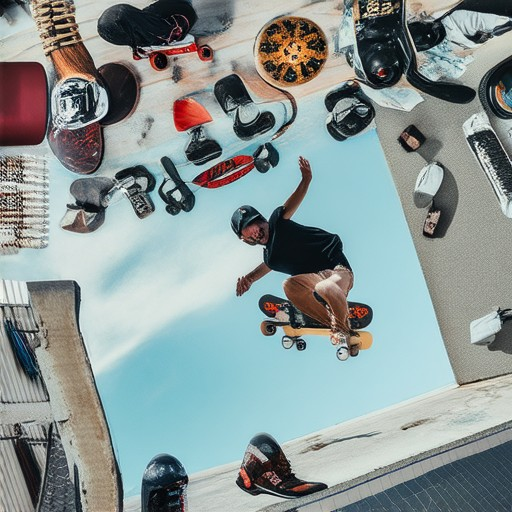
Essential Skateboarding Equipment
To enjoy skateboarding safely and effectively, you’ll need the right combination of gear and clothing. Here’s a breakdown of the essential items:
- Safety Gear:
- Helmet: Protects your head during falls. Choose one that fits snugly and has a visor for added protection.
- Elbow Pads: Prevent scrapes and bruises on your elbows.
- Knee Pads: Offer protection for your knees during crashes.
- Wrist Pads: Help reduce impact on your wrists during impacts.
- Clothing:
- Long Pants: Ideal for protecting your legs from gravel or rough surfaces.
- Long-Sleeve Shirt: Provides sun protection and helps prevent skin scrapes.
- Gloves: Enhances grip and protects your hands.
- Footwear:
- Skate Shoes: Designed with sticky rubber soles for better traction and control.
- Accessories:
- Backpack: Useful for carrying extra supplies like water, snacks, and tools.
- Multi-Tool or Allen Wrench: Helps with minor repairs to your skateboard or components.
- Watch: Useful for tracking your progress and timing tricks.
- Sunglasses: Protects your eyes from UV rays and debris.
- Additional Tips:
- Choose a helmet that fits properly according to size guidelines.
- Always wear protective gear properly to maximize effectiveness.
For more information on selecting the right gear, check out our apparel guide and shoe guide .
What Equipment is Needed for Skateboarding?
Skateboarding requires a combination of specialized equipment and protective gear to ensure safety and comfort. Below is a breakdown of the essential items:
- Skateboard Types : Choose from cruisers, longboards, street boards, or mini cruisers depending on your style and terrain.
- Protective Gear :
- Helmets : Essential for head protection.
- Wrist Braces : Prevent injuries from falls.
- Knee Pads : Protect your lower limbs during crashes.
- Elbow Pads : Shield your elbows from impacts.
- Footwear : Wear skate-specific shoes with improved grip and durability.
- Clothing : Dress in breathable, flexible clothing like hoodies, t-shirts, and joggers. Include moisture-wicking socks for comfort and grip.
- Accessories :
- Grips : Non-slip grips for better control.
- Bags/Backpacks : For carrying essentials like water, snacks, and tools.
- Additional Tools :
- Multi-Tool or Allen Wrench : For quick fixes and adjustments.
- Watch or Timer : To track practice sessions and improve timing.
- Optional Gear :
- Fingerless Gloves : Common among skateboarders for better grip and control.
- Towel : Useful for wiping sweat and cleaning your board.
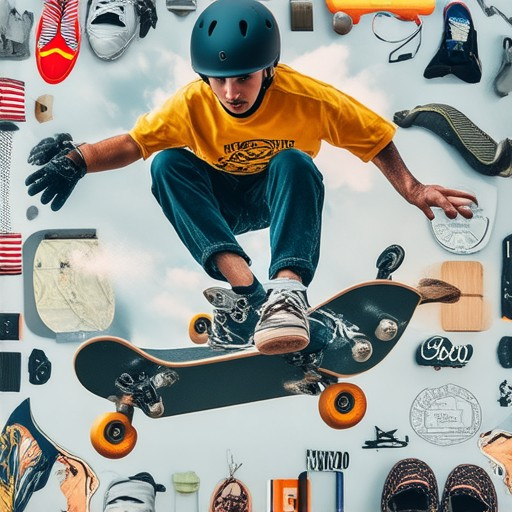
Essential Gear for Buying a Skateboard
When purchasing a skateboard, it’s crucial to equip yourself with the right gear to enjoy the activity safely and effectively. Here’s a breakdown of the essentials:
- Deck Size : Choose a deck size based on your height and skill level. Common options include cruiser, mini, and standard sizes.
- Wheels : Wheels come in various sizes; larger wheels may offer speed, while smaller wheels are better suited for tricks.
- Trucks : Trucks come in different configurations like reverse or regular, affecting handling and maneuverability.
- Bearings : Typically, 8 bearings are recommended for smooth operation. Ensure they’re clean and well-lubricated.
- Griptape : Opt for high-quality griptape, available in varying thicknesses depending on personal preference and grip needs.
- Bolts : Use standard bolts for secure assembly, ensuring they are neither too loose nor overly tight.
- Protective Gear : Essential items include a helmet, wrist guards, knee pads, and elbow pads for added safety during falls or crashes.
Setup Options
Consider whether to opt for a complete skateboard (pre-assembled with deck, trucks, wheels, and bearings) or a custom setup where you assemble components yourself. A complete board is ideal for beginners due to its ease of use and reduced risk of misassembly errors.
Purchasing Tips
Visit reputable skate shops, both physical locations and online retailers, to explore brands like Santa Cruz, Element, and Bones, known for their durability and performance. Research online forums and tutorials for insights on specific components and setups tailored to your skill level and preferences.
Maintenance
Regularly clean your skateboard to prevent dirt buildup and maintain optimal performance. Lubricate bearings periodically to ensure smooth operation and extend their lifespan.
Accessories
Consider adding accessories like a skateboard backpack for carrying essentials, ensuring you’re prepared for your adventures.
Safety First
Prioritize safety by wearing protective gear and adhering to basic safety guidelines to enhance your skating experience and reduce injury risks.
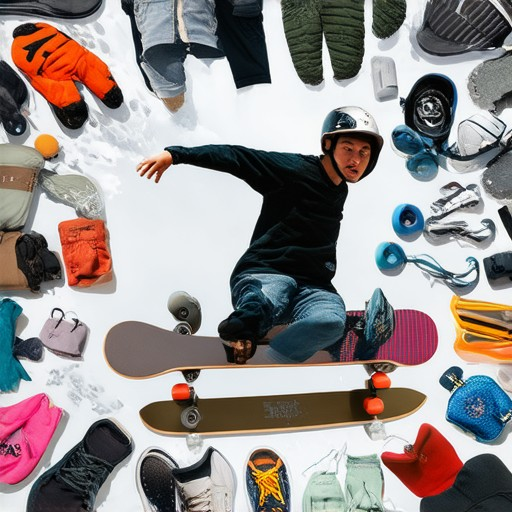
Essential Skateboarding Gear: What You Need
Protective gear is crucial for enjoying skateboarding safely. Here’s a breakdown of the essential items:
- Helmet : Always wear a multi-sport helmet meeting CPSC standards. Opt for a full-face helmet for added protection, especially for kids.
- Clothing : Dress in breathable, durable clothing. Long sleeves and pants protect against scrapes and the board’s surface. Moisture-wicking fabrics like cotton blends keep you dry.
- Shoes : Choose closed-toe, slip-resistant shoes. Popular brands include Vans, Converse, and DC Shoes. Ensure they fit snugly for better control.
- Wrist Guards : While optional, they offer extra protection. Try them to see what works best for you.
- Knee and Elbow Pads : Essential for protecting these areas. Replace them when worn out or ill-fitting.
- Goggles : Protect your eyes with shatterproof goggles. Brands like Oakley and Fox offer good options. Replace them every season.
- Accessories : Carry a small backpack for essentials. Wear a helmet even when carrying items. Stay hydrated with a water bottle.
Remember, proper fitting is key. Get professional measurements for helmets and pads to maximize safety. Skaters vary in age and skill, so choose gear suited to your level and needs.
Explore our selection of skateboarding gear for the perfect fit. Keep safe and enjoy your ride!
What Not to Wear When Skateboarding
When it comes to skateboarding, safety and comfort are key. Here’s a list of things to avoid wearing to ensure a safer and more enjoyable experience:
- Safety Gear: Always wear a helmet to protect your head. Consider wrist guards and knee pads for added protection.
- Jewelry and Accessories: Avoid wearing jewelry, necklaces, bracelets, or other accessories that could get caught in zippers, belts, or other moving parts of your skateboard.
- Loose Clothing: Stay away from loose shirts, hoodies, or bags that could catch on the ground, rails, or other objects while skating.
- Uncomfortable Shoes: Skip the flip-flops or sandals—they offer little to no support and can increase your risk of injury. Opt for skateboarding-specific shoes with proper cushioning and grip.
- Hat Styles: Avoid wearing hats with loose strings, beads, or other detachable parts that could pose a hazard.
- Bright Colors: While bright clothing may help drivers see you, avoid wearing all-bright outfits that could blind others or make you a target.
- Heavy Materials: Steer clear of heavy, rigid clothing like denim jackets or thick sweaters that could snag on rails or other skatepark equipment.
- Inappropriate Footwear: Avoid wearing sneakers, boots, or shoes with smooth soles that lack the necessary grip for skateboard maneuvers.
- Unsecured Headwear: Make sure your sunglasses or helmet straps are secure to prevent them from coming loose during tricks or falls.
- Overly Tight Clothing: Tight clothing can restrict movement and may lead to discomfort or accidents on the board.
Remember to check the weather forecast before heading out and choose appropriate clothing for the conditions. Prioritizing safety and comfort will help you enjoy your skateboarding session more!
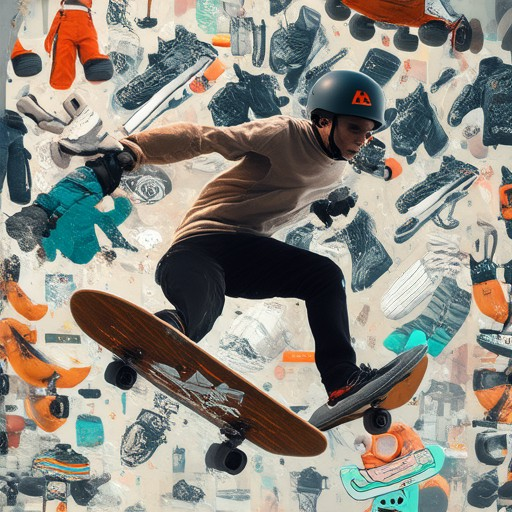
What Age is Best for Skateboarding?
Skateboarding is a fun and versatile activity that can be enjoyed by people of all ages, but there’s an optimal age range for starting out. Generally, children between the ages of 8 to 12 years old are considered the best age group to begin learning skateboarding. This age group has the physical maturity needed to grasp the basics, such as balancing and coordinating movements, while still having the flexibility to learn and improve.
For younger kids (around 5-7 years old), smaller boards like mini cruisers or rollerblades are often recommended. These are easier to control and safer for navigating smaller spaces. As kids grow taller and stronger, typically around 9-11 years old, they can transition to full-sized skateboards.
Teenagers and adults can also enjoy skateboarding, though they may find it easier to pick up tricks due to their larger size and strength. However, the initial learning phase for younger individuals tends to be more intuitive and less frustrating.
Benefits of Skateboarding for Kids
- Physical Development: Enhances coordination, balance, and strength.
- Cognitive Skills: Improves problem-solving and spatial awareness.
- Social Interaction: Encourages teamwork through shared experiences.
Choosing the Right Board and Gear
When selecting a board, consider the rider’s skill level and body size. For younger kids, soft boards or those with wheels that lock in place can provide added stability. Helmets, knee pads, and wrist guards are essential for safety.
Getting Started Locally
Many communities offer skate parks or local skate shops where you can find lessons or meet experienced skaters who can offer guidance. Kickflip Boards is a great resource for finding these locations and learning more about the sport.
Conclusion
Skateboarding is a fantastic activity that can be enjoyed at any age, but the best age to start is typically between 8 to 12 years old. With the right equipment and support, kids can quickly develop a love for this unique and dynamic sport. So, if you’re considering introducing your child to skateboarding, give it a try – you won’t regret it!
Learn more about skateboarding equipment and tips at Kickflip Boards .
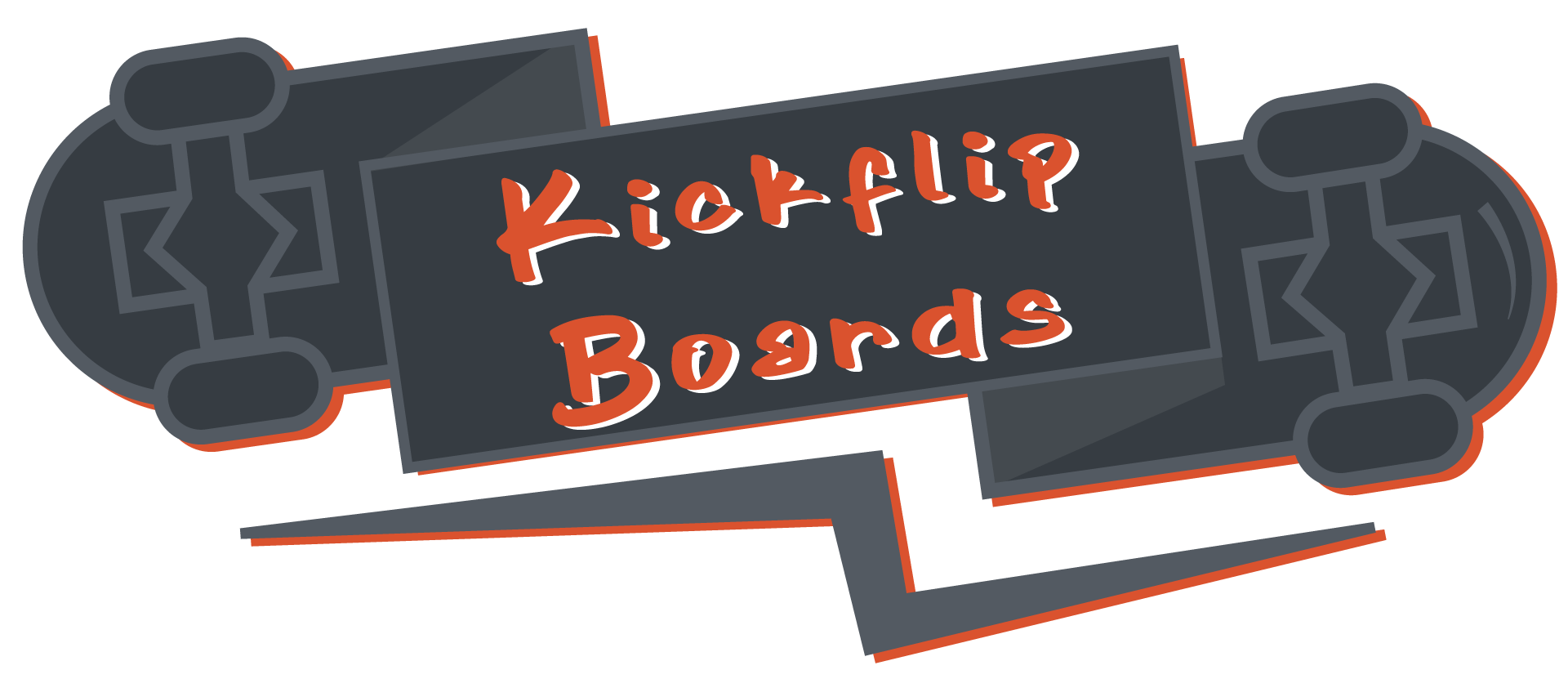



0 Comments